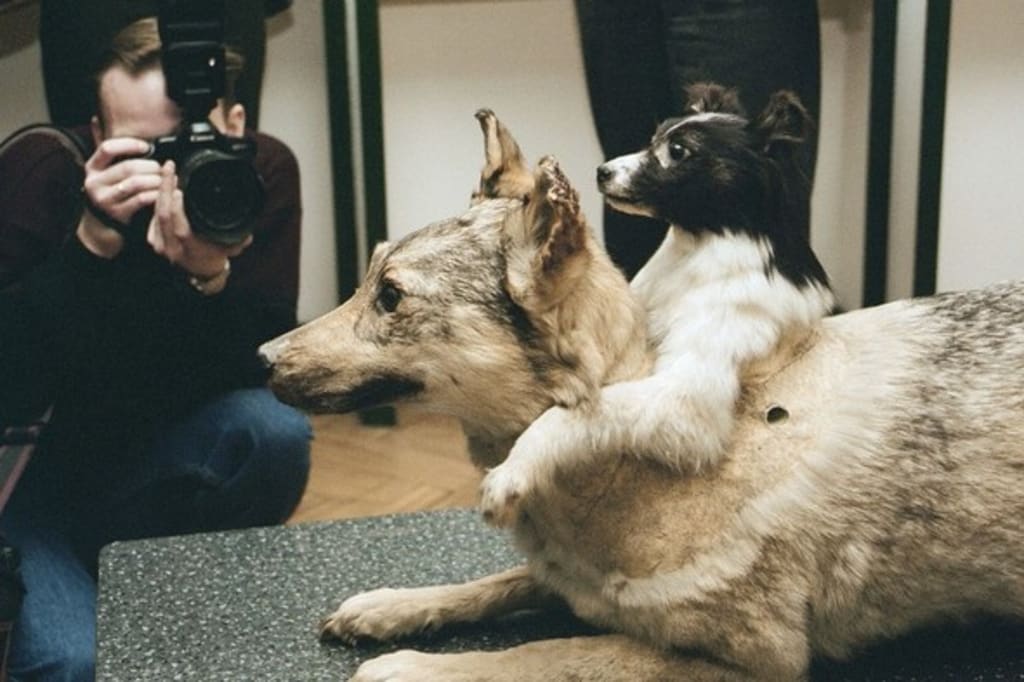How Vladimir Demikhov Made a Dog With Two Heads
Even though it's hard to believe, Soviet scientist Vladimir Demikhov really did make a dog with two heads. The proof is in these strange photos.

Vladimir Petrovich Demikhov was a Soviet scientist and organ transplantation pioneer, who performed several transplants in the 1940s and 1950s,
It might be unfair to call the Soviet doctor Vladimir Demikhov a "mad scientist" because of what he did for medicine, but some of his crazy experiments do fit the description. For example, Vladimir Demikhov did make a two-headed dog in the 1950s, even though it may seem like a myth, a lie, or a case of history that has been changed.
Vladimir Demikhov’s Pioneering Career In Medical Research
Vladimir Demikhov was a pioneer in transplantology even before he made the two-headed dog.
He even came up with the word "transplantology." After he transplanted several vital organs between dogs, which were his favorite test subjects, he wanted to see if he could go even further: He wanted to put the body of one dog onto the head of another dog that was intact.
Demikhov and his colleagues tried to do this surgery 23 times, with varying degrees of success, beginning in 1954. The 24th time, in 1959, was not the most successful, but it was the most well-known because LIFE Magazine wrote about it and included photos. So, this is the two-headed dog that people remember most from history.
Demikhov chose two dogs for this surgery: a big stray German Shepherd he called Brodyaga (which means "tramp" in Russian) and a smaller dog he called Shavka. The host dog would be Brodyaga, and the second head and neck would come from Shavka.

Shavka's lower body was cut off below her forelegs, but her heart and lungs were left connected until the last minute before the transplant. Brodyaga's neck was cut where Shavka's upper body would go, and the rest of the surgery was mostly vascular reconstruction. The dogs' vertebrae were tied together with plastic strings.
The operation only took three and a half hours because the team had a lot of experience. When the dog with two heads was brought back to life, both heads could see, hear, smell, and swallow. Shavka's new head could drink, but she did not have access to Brodyaga's stomach. Anything she drank flowed through an external tube and onto the floor.
The Horrible Fate Of The Two-Headed Dog
In the end, this two-headed dog lived only four days. Had a vein in the neck area not accidentally gotten damaged, it may have lived even longer than Demikhov’s longest-living two-headed dog, which survived 29 days.

Even if you ignore the fact that the dogs in Demikhov's experiment died, it's hard to say what the right thing to do is. Unlike some of his other advances in transplantology, this head transplantation did not help people in the real world. Still, there were very real consequences for the dogs.
However, as outrageous as this all sounds, a head transplant wasn’t even that radical for the 1950s. Dr. Alexis Carrel, a French surgeon, and Dr. Charles Guthrie, an American physiologist, tried the same thing as early as 1908. Their dog with two heads started out well, but it got worse quickly and was put down within a few hours.

Sergio Canavero, an Italian neurosurgeon, thinks that head transplants will be possible in a very short time. He is very involved in the first attempt with a human, which is set to happen in China, where there are fewer rules about health and ethics. Canavero said last year, “They have a tight schedule but the team in China say they are ready to do it.”
Still, most people in the medical field think that this kind of transplant is still something from science fiction. But in the not too distant future, this kind of surgery may be possible.
About the Creator
Rare Stories
Our goal is to give you stories that will have you hooked.
This is an extension of the Quora space: Rare Stories
X(formerly Twitter): Scarce Stories
Official Bookstore: davidkellertruecrime
Writers:
....xoxo






Comments
There are no comments for this story
Be the first to respond and start the conversation.